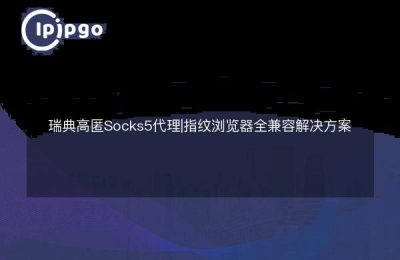
In today's internet age, privacy and security are an increasingly important part of people's daily lives. In order to protect personal information from prying eyes and ensure the security of network connection, using proxy server has become one of the choices for many people.Socks5 proxy, as a kind of efficient, flexible and secure proxy protocol, has attracted a lot of attention for its use on Android system. In this article, we will introduce how to use Socks5 proxy on Android and its principle, to help you better utilize the proxy server to protect your network connection.
What is a Socks5 proxy?
Socks Proxy Protocol is a network protocol that allows clients to communicate between a client and a server.Socks5 Proxy has many improvements over previous versions, including support for UDP and authentication. On Android devices, Socks5 proxy can be implemented through third-party applications, providing users with a more convenient and secure proxy service.
Steps to use Socks5 proxy on Android
To use the Socks5 proxy on your Android device, you need to complete the following steps:
- Choose the right Socks5 Proxy app: search for and download Socks5 Proxy app on Google Play Store or any other app store, make sure you choose the one with good reputation and high ratings.
- Configure proxy server information: Open the selected Socks5 proxy application, enter the proxy server address, port number and authentication information (if required) in the settings page, and save the settings.
- Enable Proxy: Enable the Socks5 proxy in the application and follow the application's prompts to complete the corresponding operations, usually just click the "Connect" button to establish a proxy connection.
- Verify the proxy connection: Open a browser or other application, visit a website where you can query the IP address, and confirm that the displayed IP address is the same as the address of the proxy server, which indicates that the proxy connection has been successfully established.
Principle Explained: How does the Socks5 proxy work?
Socks5 proxy works in the transport layer, it is built on top of TCP and supports UDP. when you enable Socks5 proxy on your Android device, the network traffic on the device will be forwarded through the proxy server, thus realizing the purpose of hiding the real IP address, encrypting the data transmission, etc. The working principle of the Socks5 proxy can be simply described as follows: the user request is encapsulated by the Socks5 protocol and sent to the proxy server. The working principle of Socks5 proxy can be briefly described as follows: the user request is encapsulated by Socks5 protocol and sent to the proxy server, which receives the request and forwards it to the target server, and then sends the response from the target server back to the user's device through the proxy server, which is finally presented to the user.
In addition to the above basic principles, Socks5 proxy also supports authentication, remote DNS query and other functions, allowing users to configure proxy rules more flexibly, enhancing the security and privacy of network connections.
All in all, Socks5 proxy is very convenient to use on Android devices. By properly configuring and enabling the proxy, users can effectively protect their privacy and data security, and enjoy a more secure network experience.
We hope that through the introduction of this article, you can better understand how to use Socks5 proxy on Android and the principle, so as to better protect your rights in cyberspace.








